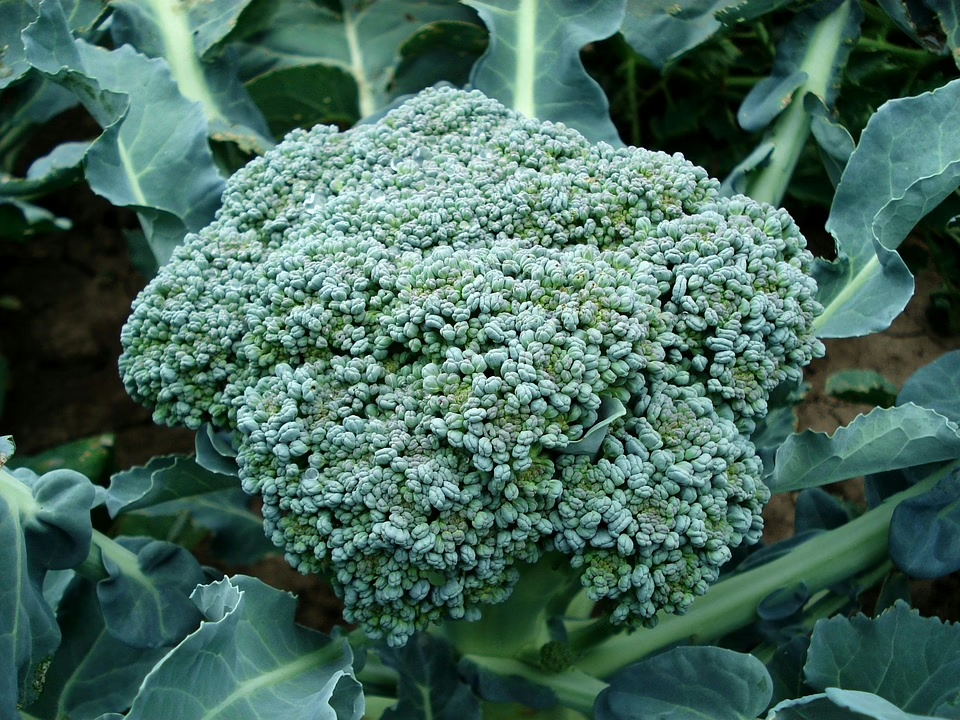Boost Your Health: The Benefits of Adding More Fiber to Your Plate
Introduction
Dietary fiber is often overlooked when it comes to nutrition. Yet, it plays a crucial role in maintaining health and preventing various diseases. With a growing body of evidence suggesting that adequate fiber intake can significantly improve health outcomes, it’s time to explore the myriad benefits of this essential nutrient, and how you can incorporate more of it into your diet.
What is Dietary Fiber?
Dietary fiber is the indigestible part of plant foods, which can be classified into two categories: soluble and insoluble fiber.
-
Soluble Fiber: This type dissolves in water and forms a gel-like substance. It is found in foods like oats, beans, lentils, fruits, and vegetables. Soluble fiber can help lower blood cholesterol and glucose levels.
-
Insoluble Fiber: This type does not dissolve in water and is found in whole grains, nuts, and the skins of some fruits and vegetables. Insoluble fiber aids in the movement of food through the digestive tract, promoting regularity and preventing constipation.
Both types of fiber contribute to overall health and should be included in a balanced diet.
Health Benefits of Dietary Fiber
1. Improved Digestive Health
Fiber is essential for a healthy digestive system. It adds bulk to the stool and helps it pass through the intestines more easily. This can prevent constipation and promote regular bowel movements. A diet rich in fiber can decrease the risk of diverticular disease, hemorrhoids, and certain types of colorectal cancer.
2. Heart Health
Both soluble fiber and insoluble fiber can contribute to heart health. Soluble fiber helps lower blood cholesterol levels by binding to cholesterol in the digestive system and facilitating its excretion. As a result, high-fiber diets are associated with reduced risk factors for cardiovascular diseases. The American Heart Association recommends consuming at least 25 grams of fiber daily for women and 38 grams for men, emphasizing the importance of this nutrient in heart health.
3. Blood Sugar Control
Fiber can help stabilize blood sugar levels by slowing the absorption of sugar, making it an important factor for those managing diabetes. Consuming high-fiber foods helps prevent spikes in glucose levels, improving overall glycemic control. Studies indicate that individuals with diabetes who consume adequate fiber report better blood sugar management and lower insulin levels.
4. Weight Management
Incorporating fiber-rich foods into your diet can support weight loss and management efforts. High-fiber foods are typically more filling, which can reduce overall calorie intake. Eating fiber helps you feel fuller for longer, leading to lower chances of snacking and overeating. Additionally, foods that are high in fiber often require more chewing, which can slow down eating and trigger satiety signals sooner.
5. Reduced Risk of Certain Cancers
Some studies suggest that a high-fiber diet may reduce the risk of developing certain cancers, particularly colorectal cancer. The mechanisms behind this protective effect may include fiber’s ability to promote healthy gut bacteria, increase stool bulk, and reduce transit time, leading to decreased exposure to potential carcinogens.
6. Enhanced Gut Microbiome
Fiber acts as a prebiotic, which is a substance that feeds the beneficial bacteria in the gut. A healthy gut microbiome has been linked to improved mood, immune function, and overall wellness. Increasing fiber intake supports the growth of healthy gut flora, which can contribute to mental and physical health.
7. Reduced Cholesterol Levels
Dietary fiber, particularly soluble fiber, can help lower LDL (“bad”) cholesterol levels in the blood. By consuming foods like oats, beans, and fruits, you can effectively manage cholesterol levels, which reduces the risk of heart disease and stroke.
How Much Fiber Do You Need?
According to the Dietary Guidelines for Americans, the recommended daily intake of fiber is:
- Women: 25 grams per day
- Men: 38 grams per day
However, the average American consumes only about 15 grams of fiber daily, indicating a significant shortfall. Increasing your fiber intake can be achieved through gradual dietary changes.
Fiber-Rich Foods to Incorporate into Your Diet
Incorporating fiber into your diet doesn’t have to be difficult. Here are some fiber-rich foods that can easily be added to your meals:
Whole Grains
- Oats: A great source of soluble fiber, which can be consumed as oatmeal or added to baked goods.
- Quinoa: A high-protein grain that is rich in fiber and versatile for salads and side dishes.
- Brown Rice: A whole grain alternative to white rice that provides more fiber and nutrients.
Legumes
- Lentils: Packed with protein and fiber, lentils can be easily added to soups, salads, or made into a delicious lentil stew.
- Chickpeas: Can be used in salads, made into hummus, or roasted for a crunchy snack.
- Black Beans: A fiber powerhouse that works well in burritos, salads, and chili.
Fruits
- Raspberries: With about 8 grams of fiber per cup, they can be added to smoothies, oatmeal, or enjoyed as a snack.
- Avocados: A unique fruit that is high in both fiber and healthy fats. Great for salads, sandwiches, or guacamole.
- Pears: A delicious way to add fiber; simply eat it with the skin for maximum benefits.
Vegetables
- Broccoli: Offers a significant amount of fiber along with vitamins and minerals.
- Brussels Sprouts: Another cruciferous vegetable that is high in fiber and can be roasted or steamed.
- Carrots: Crunchy and versatile, they can be eaten raw, steamed, or roasted for a nutritious snack.
Nuts and Seeds
- Chia Seeds: Extremely high in fiber and can be added to smoothies, yogurt, or puddings.
- Almonds: A healthy snack that provides fiber and protein; ideal for on-the-go.
- Flaxseeds: Ground flaxseeds can be added to baked goods, smoothies, or cereals for an extra fiber boost.
Tips for Increasing Fiber in Your Diet
-
Start Gradually: Increase your fiber intake slowly to allow your digestive system to adjust. This can help prevent bloating and discomfort.
-
Choose Whole Foods: Opt for whole grain products instead of refined grains. For example, chose whole wheat bread over white bread.
-
Incorporate Fruits and Vegetables into Each Meal: Aim to fill half your plate with fruits and vegetables during meals.
-
Snack Wisely: Choose fiber-rich snacks, such as nuts, seeds, or raw vegetables, instead of processed treats.
-
Read Labels: When shopping, check food labels for fiber content. Look for products that contain at least 3 grams of fiber per serving.
-
Combine Foods: Mix different high-fiber ingredients into one meal, such as adding beans to salads or whole grains to stir-fries.
-
Stay Hydrated: Drinking plenty of water is essential when increasing fiber intake, as it helps to prevent digestive discomfort.
Common Myths About Fiber
Myth 1: Low-Fiber Diets are Healthy
Some people believe that low-fiber diets are acceptable, especially in weight loss regimens. However, neglecting fiber can lead to digestive issues, increased cholesterol levels, and higher risks for chronic diseases.
Myth 2: You Can Get Enough Fiber from Supplements
While fiber supplements can help, they should not replace fiber from whole foods. Whole foods provide a range of nutrients and health benefits beyond just fiber.
Myth 3: Beans and Whole Grains Cause Gas and Bloating
While some individuals may experience gas from high-fiber foods, the digestive system often adjusts over time. The health benefits of consuming fiber-rich foods far outweigh these temporary discomforts.
Conclusion
Incorporating more fiber into your diet offers numerous health benefits, from improved digestive health to heart disease prevention. By making simple changes in your eating habits, you can effectively increase your fiber intake and enjoy a healthier lifestyle. Emphasizing whole foods, such as fruits, vegetables, whole grains, and legumes, will not only help you meet your fiber needs but also provide essential nutrients.
As you embark on this journey to a high-fiber diet, remember to start gradually, stay hydrated, and enjoy the newfound health benefits that come with improving your dietary fiber intake. Your body will thank you!
References
- American Heart Association. (2020). Dietary Fiber.
- Slavin, J. (2013). Fiber and Prebiotics: Mechanisms and Health Benefits. Nutrients, 5(4), 1417-1435.
- Aune, D. et al. (2011). Dietary Fiber and Breast Cancer Risk; A Systematic Review and Meta-Analysis of Observational Studies. Annals of Oncology, 22(11), 2706-2714.
- O’Neil, C.E. et al. (2014). Fiber Intake Is Associated with Higher Daily Energy Intake and Better Diet Quality in Adults. Journal of the American Dietetic Association, 114(6), 882-889.
- Anderson, J.W., et al. (2009). Health Benefits of Dietary Fiber. Nutrition Reviews, 67(4), 188-205.


























Add Comment